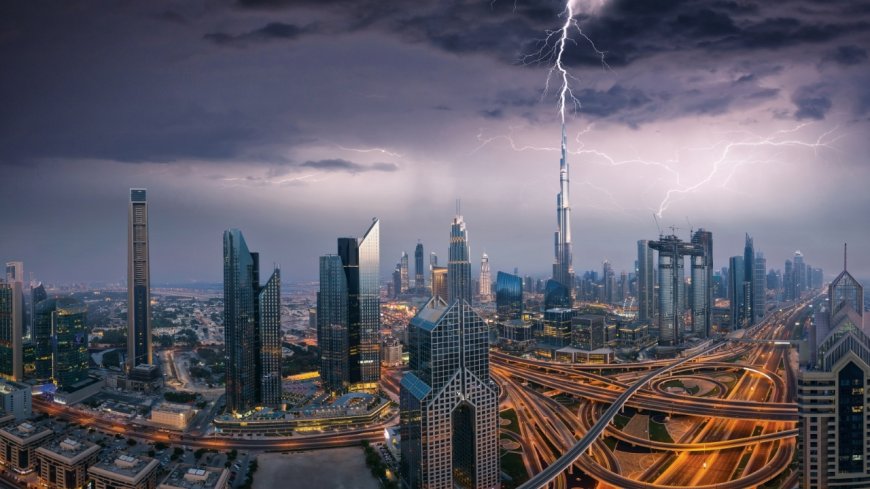Traditional Earthing vs Modern Lightning Protection
Lightning Protection System in Bangladesh has become a critical focus in recent years as urban infrastructure, high-rise buildings, and sensitive electrical systems continue to grow across the country. As a trusted name in the industry, Power Ark Engineering specializes in designing and implementing cutting-edge lightning protection systems that outperform outdated methods. In this article, we’ll explore the differences between traditional earthing and modern lightning protection, and why upgrading your system is essential for safety and compliance in today’s Bangladesh.

Understanding Lightning and the Need for Protection
Bangladesh experiences frequent thunderstorms due to its tropical monsoon climate. With thousands of lightning strikes recorded annually, the damage to life, property, and electronics is staggering. A well-planned lightning protection system is no longer optional—it is a necessity.
Traditional earthing methods were once sufficient for basic safety. However, with the advancement of technology and increased reliance on sensitive electronic devices, the need for more efficient and modern solutions has become apparent.
What is Traditional Earthing?
Traditional earthing, also known as grounding, involves connecting electrical installations to the ground using conductors like copper or galvanized iron rods. Its primary purpose is to safely disperse fault currents into the earth and prevent electric shock.
Components of Traditional Earthing:
-
Earth rods (copper or GI)
-
Earthing plates
-
Salt and charcoal layers
-
Earth pits
-
Simple bonding wires
Benefits of Traditional Earthing:
-
Basic protection against electric shocks
-
Cost-effective for small buildings
-
Simple to install
Limitations of Traditional Earthing:
-
Not reliable during lightning strikes
-
Needs frequent maintenance (due to corrosion and soil resistance)
-
Limited protection for sensitive electronic equipment
-
Does not cover wider areas effectively (e.g., large commercial or industrial sites)
What is Modern Lightning Protection?
Modern lightning protection systems go beyond simple grounding. These systems are engineered to intercept, conduct, and disperse lightning safely into the ground without damaging buildings or harming people.
A complete Lightning Protection System in Bangladesh—especially the ones installed by Power Ark Engineering—includes scientifically designed air terminals, down conductors, surge protection devices, and advanced earthing systems.
Key Components of Modern Lightning Protection:
-
Air Terminals (Lightning rods)
-
Down Conductors (Aluminum or copper strips)
-
Earth Terminals (Chemical or maintenance-free electrodes)
-
Surge Protection Devices (SPDs for electrical systems)
-
Bonding Systems (Connecting all metal parts to the grounding system)
Advantages of Modern Lightning Protection:
-
Efficient dissipation of lightning energy
-
Protects people, buildings, and electronic systems
-
Long-lasting with minimal maintenance
-
Designed to meet international and Bangladesh National Building Code (BNBC) standards
-
Adaptable to modern architecture and complex structures
Traditional Earthing vs Modern Lightning Protection: A Head-to-Head Comparison
|
Feature |
Traditional Earthing |
Modern Lightning Protection |
|
Purpose |
Basic fault current dissipation |
Complete lightning strike interception and dissipation |
|
Components |
Earth rods, charcoal, salt, GI wire |
Air terminals, SPDs, bonding, electrodes |
|
Efficiency During Lightning |
Low |
High |
|
Protection for Electronics |
Minimal |
Comprehensive (with SPDs) |
|
Maintenance |
Frequent (corrosion, soil degradation) |
Low (chemical earthing, durable materials) |
|
Standards Compliance |
Limited |
BNBC & IEC standards |
|
Installation Complexity |
Simple |
Professionally engineered |
|
Best Use Case |
Rural homes, small installations |
Urban areas, high-rises, factories, IT hubs |
Why Modern Lightning Protection is the Future for Bangladesh
The need for modern lightning protection is especially pressing in a rapidly developing country like Bangladesh. With more high-rise buildings, communication towers, data centers, and manufacturing hubs, outdated earthing systems can no longer provide adequate protection.
Here's why modernization matters:
-
Climate vulnerability: Bangladesh is one of the most lightning-prone countries in Asia.
-
Urban development: Modern infrastructure demands modern safety.
-
Digital dependence: Sensitive electronics are at constant risk.
-
Regulatory push: The Bangladesh government is emphasizing safety regulations, and modern lightning systems help comply.
Power Ark Engineering stays ahead by offering custom-designed Lightning Protection Systems in Bangladesh, tailored for residential, commercial, and industrial needs.
The Role of Surge Protection in Modern Systems
An often-overlooked aspect of lightning protection is surge protection. Even without a direct strike, nearby lightning can induce electrical surges in the wiring of a building. These surges can destroy:
-
Computers and servers
-
Telecommunication systems
-
Electrical appliances
-
Industrial machinery
Surge Protection Devices (SPDs) are a critical part of a modern lightning protection setup. They divert excess voltage safely to the ground, protecting internal systems.
At Power Ark Engineering, every lightning protection design includes an SPD layer, ensuring full-spectrum protection.
Installation and Cost Considerations
While modern systems may have a higher upfront cost compared to traditional earthing, the long-term savings and peace of mind they offer are substantial.
Factors that influence cost:
-
Size and height of the structure
-
Type of soil (important for grounding)
-
Proximity to lightning-prone zones
-
Type of lightning protection required (Class I, II, III)
-
Use of SPDs and number of bonding points
Power Ark Engineering offers affordable, scalable solutions for any budget—backed by expert consultation and BNBC compliance.
How to Choose the Right Lightning Protection System in Bangladesh
If you're building a new home, factory, hospital, or office, consider the following:
-
Risk Assessment: Evaluate the structure’s exposure to lightning.
-
Engineering Design: Use a professional company like Power Ark Engineering.
-
Regulation Compliance: Ensure it follows BNBC and international codes.
-
Installation Quality: Don’t cut corners—go for durable materials and expert installation.
-
Regular Inspection: Schedule periodic inspections and maintenance.
Common Myths About Lightning Protection
Let’s bust some myths:
-
Myth: “Lightning never strikes the same place twice.”
Truth: It can and often does—especially tall structures.
-
Myth: “Traditional earthing is enough.”
Truth: Not in modern setups with sensitive electronics.
-
Myth: “Lightning rods attract lightning.”
Truth: They safely intercept and guide it into the ground.
-
Myth: “Only tall buildings need protection.”
Truth: Any structure can be hit—especially in rural open areas.
Conclusion
In a lightning-prone country like ours, a modern Lightning Protection System in Bangladesh is a must-have, not a luxury. Power Ark Engineering is here to ensure that your property, people, and technology are fully protected using the latest systems that exceed traditional earthing in every way.






























































































































































